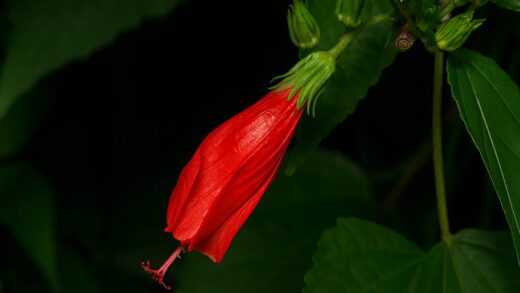Understanding the precise water requirements of the blanket flower is fundamental to cultivating a plant that is not only beautiful but also resilient and healthy. This vibrant perennial, native to the sun-baked prairies of North America, has evolved to thrive in conditions where water is often a scarce commodity. As a result, its irrigation needs are modest, and one of the most common mistakes a gardener can make is to provide it with too much moisture. Proper watering practices for the blanket flower are centered on the principle of deep, infrequent soaking, which encourages the development of a strong, drought-resistant root system and allows the plant to perform at its peak without the risk of water-related diseases.
The key to successfully watering blanket flowers is to recognize their life stage. A newly planted specimen has very different needs from a well-established one. During the first few weeks after being placed in the garden, the plant is focused on developing its root system to anchor itself and access water and nutrients. In this critical establishment phase, it requires consistent moisture. You should check the soil every few days and provide a thorough watering whenever the top 2-3 centimeters feel dry to the touch. This initial care ensures the plant does not experience water stress while it is most vulnerable.
Once the blanket flower is established, which is typically evident by the appearance of vigorous new growth, its watering needs change dramatically. The plant’s inherent drought tolerance takes over, and it becomes remarkably self-sufficient. For mature plants growing in a garden bed, normal rainfall in many climates is often sufficient to meet their needs. Overwatering is a far greater threat than underwatering. Excessive moisture can lead to weak, floppy growth, a reduction in flowering, and, most critically, fatal root and crown rot. It is essential to allow the soil to dry out thoroughly between waterings.
When you do need to water an established blanket flower, such as during an extended period of drought or extreme heat, the method you use is important. Avoid light, frequent sprinklings, which only wet the surface of the soil and encourage a shallow, weak root system. Instead, practice deep watering. Use a soaker hose or a gentle stream of water at the base of the plant to deliver a slow, deep soaking. This allows the water to penetrate far into the soil profile, encouraging the roots to grow downward in search of moisture, which is the key to building exceptional drought resilience. A single deep watering every week or two during a dry spell is usually more than adequate.
Container-grown blanket flowers have slightly different watering needs compared to those in the ground. The soil in pots and containers dries out much more quickly due to its limited volume and exposure to sun and wind. You will need to monitor container plants more closely, especially during hot weather. The basic principle, however, remains the same: check the soil moisture and water thoroughly only when the top few centimeters are dry. Ensure the container has excellent drainage holes to allow any excess water to escape freely, as even in a pot, a blanket flower cannot tolerate sitting in waterlogged soil.
More articles on this topic
Recognizing the signs of water stress
Being able to interpret the signals your blanket flower sends is a crucial skill for proper irrigation. The plant will clearly communicate when it is thirsty. The most obvious sign of underwatering is wilting, where the leaves and stems lose their turgidity and begin to droop. You may also notice the vibrant colors of the flowers looking slightly faded or dull. Another indicator is if the lower leaves begin to turn yellow or brown and become crispy to the touch. When you observe these symptoms, it is a clear sign that the plant requires a deep and thorough watering to rehydrate its tissues.
Conversely, it is equally important to recognize the signs of overwatering, as this is a more dangerous and often irreversible condition for the blanket flower. The symptoms of overwatering can be deceptively similar to underwatering. The plant may wilt because the waterlogged roots are suffocating and unable to absorb moisture and nutrients, leading to a drooping appearance even when the soil is wet. A key difference is that the yellowing of leaves caused by overwatering is often a more uniform, sickly yellow, and the leaves may feel soft and limp rather than dry and crispy. The base of the stems might also become dark and mushy, which is a tell-tale sign of crown rot.
To accurately diagnose the problem, always check the condition of the soil before reaching for the watering can. Push your finger about 5-7 centimeters deep into the soil near the base of the plant. If the soil feels dry at that depth, the wilting is likely due to thirst, and it is safe to water. However, if the soil feels damp, moist, or even soggy, then the wilting is a symptom of overwatering and suffocating roots. In this case, adding more water would be the worst possible action. Instead, you must allow the soil to dry out completely and assess the drainage of the planting site.
In the long term, consistently overwatered blanket flowers will exhibit poor overall health. They will have stunted growth, produce fewer and smaller flowers, and be much more susceptible to fungal diseases like powdery mildew and root rot. The goal is to find the right balance, letting the natural drought tolerance of the plant work to your advantage. It is always safer to err on the side of keeping the plant slightly too dry rather than slightly too wet. A thirsty blanket flower will rebound quickly after a good drink, but a plant suffering from rot is often beyond saving.
More articles on this topic
The importance of soil and drainage
The relationship between water and soil is at the heart of the blanket flower’s health. The type of soil you have will directly dictate your watering frequency and strategy. Blanket flowers are native to areas with sandy or gravelly soils, which are characterized by large particles and significant air space between them. This structure allows water to pass through quickly, preventing it from stagnating around the roots. Replicating these conditions is the primary goal of soil preparation for these plants. If you have naturally sandy or loamy soil, you are already at a significant advantage.
For those gardening in heavy clay soil, which consists of very fine particles that compact easily and hold onto water, amendments are not just recommended, they are essential. Clay soil can create an environment akin to a bathtub for the roots of a blanket flower, leading to almost certain failure from root rot. To improve heavy clay, you must incorporate materials that increase porosity and drainage. Coarse sand, fine gravel, or perlite are excellent inorganic amendments that physically separate the clay particles, creating channels for water to drain away. Organic matter like compost also helps by binding clay particles into larger aggregates, but inorganic materials are key for the long-term structural improvement that blanket flowers need.
The physical location and topography of your garden also play a role. A blanket flower planted at the bottom of a slope will be subjected to much more moisture as water runs down and collects there. Conversely, a plant sited on a slope or at the top of a mound will experience much sharper drainage. Creating raised beds or berms is a highly effective strategy for gardeners with heavy soil or low-lying areas. By simply elevating the root zone above the surrounding grade, you ensure that gravity will work in your favor, pulling excess water down and away from the plant’s sensitive crown.
Ultimately, the goal is to create a soil environment where you have control over the moisture level. In a well-draining soil, you can provide a deep, thorough soaking with the confidence that any excess water will quickly drain away, leaving the soil moist but not saturated. This allows oxygen to reach the roots, which is just as vital for their function as water. Before planting, it is worth taking the time to test your soil’s drainage. Dig a hole about 30 centimeters deep and fill it with water. If the water drains away within a few hours, your drainage is adequate. If it stands for many hours or overnight, you will need to take corrective action to amend the soil.
Watering techniques for optimal health
The way you apply water is just as important as how often you do it. The best practice for blanket flowers, and indeed for most garden plants, is to water the soil, not the plant. Applying water directly to the base of the plant minimizes evaporation and ensures the water gets down to the root zone where it is needed. This can be accomplished with a watering can, a gentle stream from a hose, or, most efficiently, with a soaker hose or drip irrigation system. These systems deliver water slowly and directly to the soil, preventing runoff and allowing for deep penetration.
Avoid using overhead sprinklers whenever possible. While convenient, they wet the foliage of the plants, which can create the perfect humid conditions for fungal diseases like powdery mildew to develop. The leaves of a blanket flower are somewhat fuzzy, which can trap moisture, making them particularly susceptible if they remain wet for extended periods. If you must use a sprinkler, do so early in the morning. This gives the foliage the entire day to dry out in the sun, significantly reducing the risk of disease taking hold. Watering in the evening can leave the leaves damp all night, which is an open invitation for fungal problems.
When you water, do so deeply and thoroughly. A light sprinkle that only wets the top centimeter of soil is largely useless. It encourages the plant to develop a shallow root system that is highly vulnerable to heat and drought stress. To be effective, the water needs to penetrate at least 15 to 20 centimeters into the soil. This requires a slow and steady application of water. A good rule of thumb is to water until the soil is moistened to that depth. You can check this by carefully digging a small hole near the plant after watering to see how far the moisture has penetrated.
For container-grown blanket flowers, the technique is similar. Water the soil surface thoroughly until you see water begin to flow freely from the drainage holes at the bottom of the pot. This ensures that the entire root ball has been moistened. After this initial thorough watering, do not water again until the top few centimeters of the potting mix have completely dried out. It is also important to empty any saucer or tray beneath the pot after watering, as leaving the pot to sit in a pool of standing water will lead to the same root rot issues as planting in poorly drained garden soil.
Seasonal adjustments in watering
The irrigation needs of a blanket flower are not static; they fluctuate significantly with the changing seasons. It is crucial to adapt your watering routine to match the prevailing weather conditions, the plant’s growth cycle, and its metabolic activity. Being observant and responsive to these changes is the hallmark of a skilled gardener. What works in the peak of summer will be detrimental in the cooler, wetter months of spring and autumn.
During the spring, as the plant breaks dormancy and begins its active growth phase, it requires a moderate amount of moisture to fuel the development of new stems and leaves. However, spring weather is often cool and rainy, so supplemental irrigation may not be necessary. It is a time to be vigilant and check the soil regularly, watering only if there is a dry spell. As the temperatures warm and the days lengthen heading into summer, the plant’s water needs will gradually increase. This is the time to begin a more regular watering schedule if rainfall is insufficient.
Summer is the period of peak growth and flowering for the blanket flower, and it is also the time of highest temperatures and greatest evapotranspiration. During hot, dry spells, you will need to monitor your plants most closely. An established blanket flower in the ground might need a deep watering once every one to two weeks during a drought, while a container-grown plant may need water every few days. The goal is to provide enough water to prevent stress and support continuous blooming without keeping the soil consistently wet. Always let the soil dry out between waterings.
As summer transitions into autumn, the plant’s growth naturally begins to slow down. The days become shorter, the nights become cooler, and rainfall often becomes more frequent. This is a clear signal to start reducing the frequency of your supplemental watering. The plant is preparing for dormancy and requires less moisture. Continuing to water at summer levels during the autumn is a common cause of root rot, as the plant is not actively using the water. By late autumn, you should typically cease all supplemental irrigation and let nature take its course in preparing the plant for winter. In its dormant state, the plant needs very little moisture and can be harmed by wet winter soils.


















